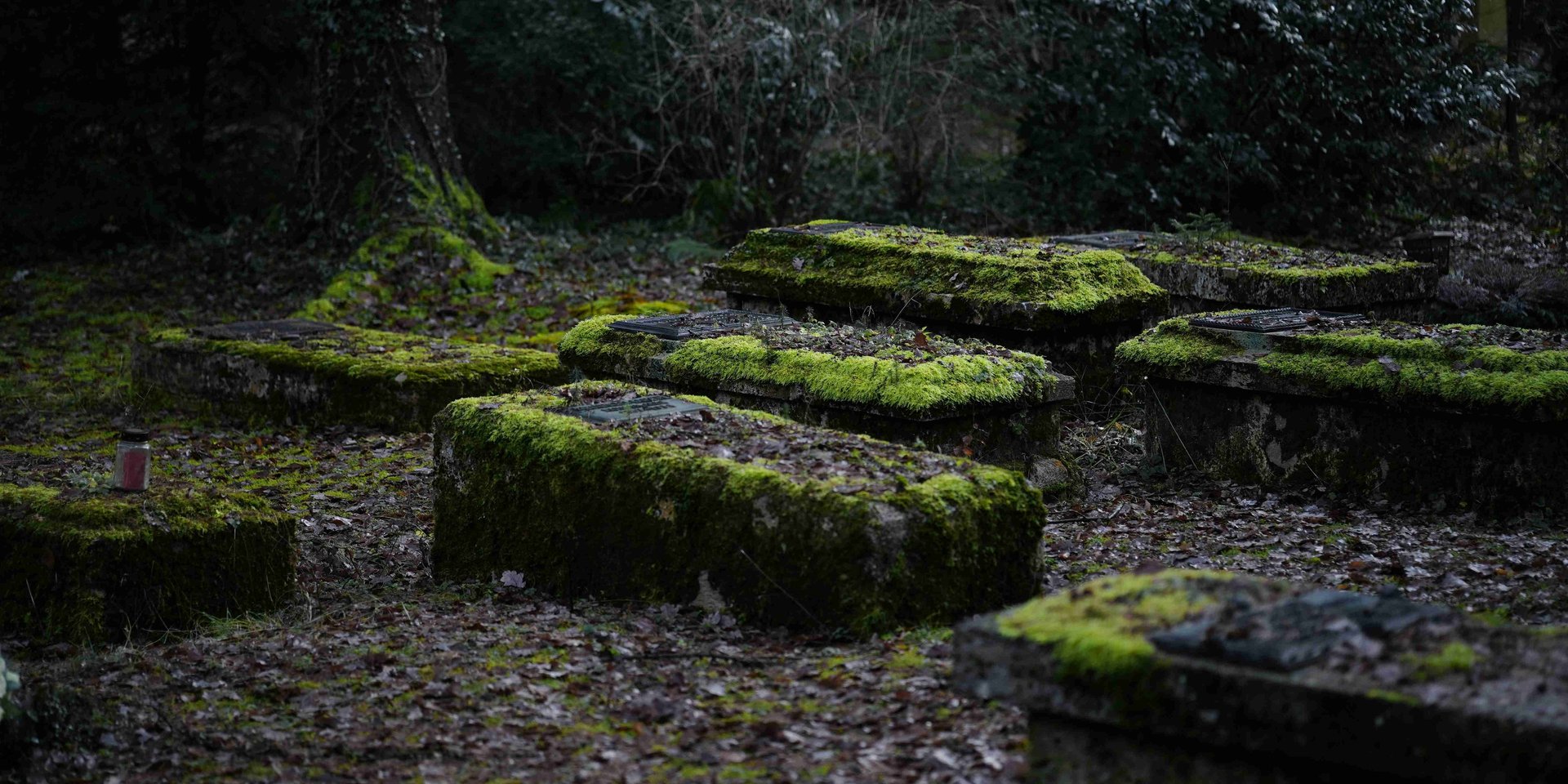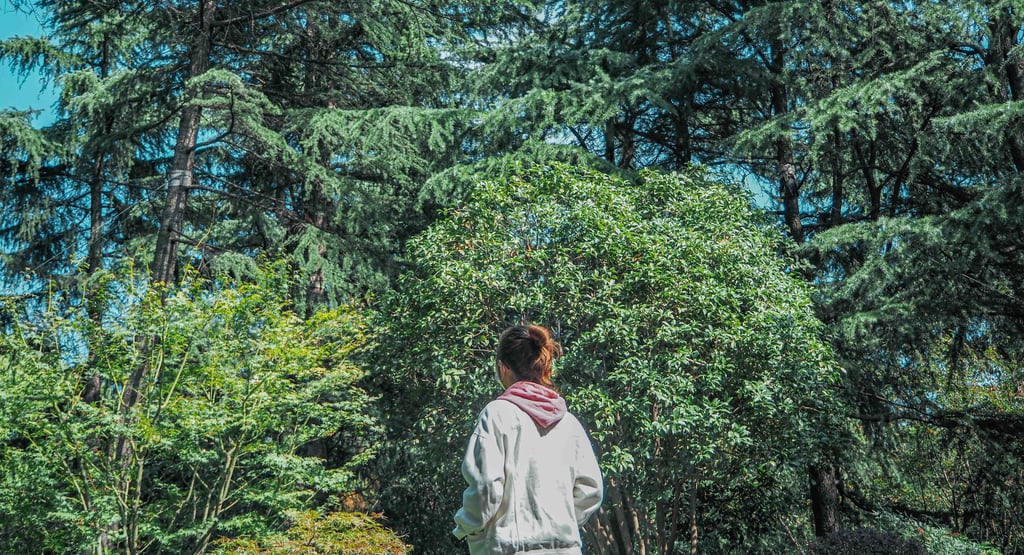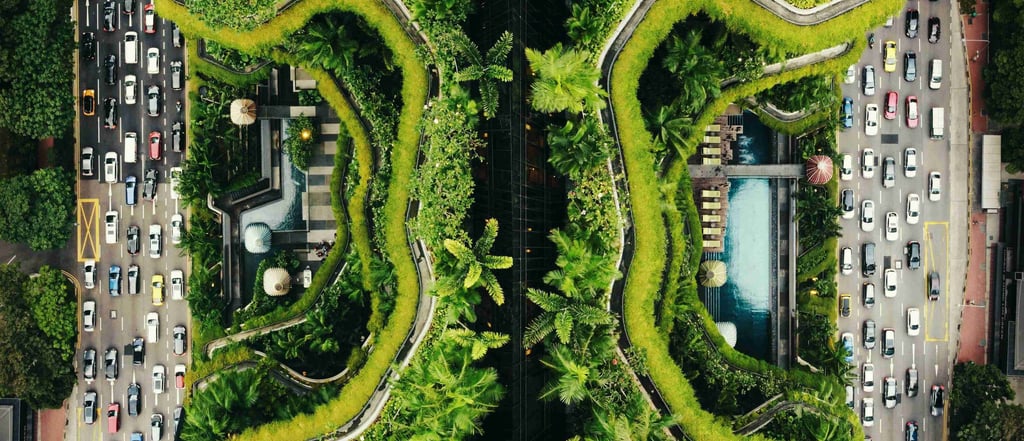
What If... We're Just Really Slow Compost? The Mind-Bending Truth About Life, Death, and Salad
Ever stared at a particularly vibrant plant and felt a shiver of existential dread? Yeah, me neither... okay, maybe a little. We're all familiar with the circle of life, the grand, sweeping narrative of birth, growth, and inevitable… well, the dirt nap. But what if that narrative is a tad more… literal than we thought? What if, just what if, we're not the apex predators we fancy ourselves to be? What if we're just… really, really slow compost?


Let's dive headfirst into the delightfully unsettling world of "What If?" scenarios, shall we? You know, the kind that keep you up at night, staring at the ceiling and wondering if your houseplants are secretly judging you.
The Curious Case of the Consuming Flora
You've seen the nature documentaries. The majestic lion takes down the gazelle, the hawk swoops for the field mouse. It's a brutal ballet of predator and prey, a food chain with us, humans, perched precariously on top. But what if the food chain isn't a linear ladder, but a… cyclical, multi-dimensional, possibly sentient garden?
Think about it. We breathe the oxygen plants produce, we eat the fruits and vegetables they generously provide. We grow strong, we build empires, we write blog posts. And then… we die. And where do we go? Back to the earth. Back to the very soil that nourishes the plants.
Is Someone Playing Games? Or is it Just Good Farming?
Is it a grand cosmic game? A bizarre, multi-species farming operation? Or just a simple, elegant cycle of life? The thought that we might be cultivated, not for our meat (thankfully), but for our decomposed essence, is strangely humbling.
Imagine a world where the towering redwoods aren't just still giants, but patient farmers, meticulously tending their human crops. The lush rainforests, not just teeming with biodiversity, but a vast, interconnected farm, where we're the slow-growing, high-nutrient yield.
The Oxygen-Nutrient Exchange: A Suspiciously Convenient Deal
Let's break down the science. Plants perform photosynthesis, taking in carbon dioxide and releasing oxygen. We breathe in oxygen and exhale carbon dioxide. It's a perfect exchange, a symbiotic relationship. Or is it?
What if the oxygen isn't just a byproduct, but a carefully calibrated stimulant, designed to make us grow bigger, stronger, and more… compostable? What if the delicious fruits and vegetables aren't just acts of generosity, but strategic bait, enticing us to consume and, ultimately, contribute to the soil's fertility?
It's like they're saying "Here have this delicious apple, grow big and juicy, then come back to me as fertilizer".
The Conspiracy of the Green Thumb
Let's go deeper down this rabbit hole, shall we? What if plants have been playing the long game all along? Consider this: approximately 3.5 billion years ago, the first photosynthetic organisms emerged. Fast forward to a mere 200,000 years ago, and Homo sapiens entered the chat. That's quite the head start for our chlorophyll-laden overlords.
During that time, plants have been quietly evolving, developing complex systems of communication, defense mechanisms, and even ways to manipulate animal behavior. Yes, you read that right – plants can and do manipulate animals. The sweet scent of nectar that attracts pollinators, the bright colors of fruits that signal ripeness to seed-dispersing animals... these aren't random evolutionary traits. They're tactical maneuvers in the grand strategy of plant domination.
And what if human civilization itself – our tendency to cultivate, nurture, and spread plant species across the globe – is just another manipulation? We think we domesticated wheat, rice, and corn, but what if they domesticated us? We've become their tireless servants, clearing land for them, fighting off their predators, even altering their genetics to help them thrive in new environments.
All for what? So that when we eventually return to the soil, we'll be premium-grade fertilizer, enriched with a lifetime of nutrients carefully selected by our plant overlords.
A Day in the Life of a Human Crop
Picture this: a typical day in your life from the perspective of the plants around you.
6:00 AM: Your indoor potted fern watches as you wake up and immediately reach for that cup of coffee – a plant product that conveniently makes you more productive.
7:30 AM: You eat breakfast – perhaps some toast (grain), with jam (fruit), and a banana (more fruit). The plants have successfully delivered their nutritional payload.
8:30 AM: You walk past a row of street trees that filter the air you breathe, keeping you healthy and extending your nutrient-gathering lifespan.
12:00 PM: Lunch time! More plant matter enters your system, disguised as delicious food.
6:00 PM: You come home and relax among your houseplants, never suspecting that they're monitoring your health, calculating your eventual compost value.
10:00 PM: As you drift off to sleep, the potted plants in your bedroom release extra oxygen, ensuring you remain well-rested and continue your unknowing service in their grand plan.
Is it coincidence that we surround ourselves with plants? That we find them calming, beautiful, necessary? Or have we been programmed to feel this way, like ants manipulated by parasitic fungi or mice losing their fear of cats when infected by Toxoplasma gondii?
The Historical Evidence: Hidden in Plain Sight
Throughout human history, plants have occupied a central place in our mythology, religion, and culture. The Tree of Life appears in numerous traditions, from Norse mythology to Kabbalah. The Garden of Eden stands at the beginning of Abrahamic religious texts. Ancient Egyptians worshipped the lotus, while Celtic druids revered the oak.
What if these weren't just symbolic representations of our relationship with nature, but actual memories of our subservience? What if our ancestors somehow intuited the truth – that we exist at the pleasure of the plant kingdom – and encoded this knowledge into their most sacred stories?
Consider the Greek myth of Persephone, forced to return to the underworld for part of each year, causing the seasons to change. On the surface, it's a story explaining natural cycles. But dig deeper (pun absolutely intended), and isn't it actually a tale about human mortality feeding the renewal of plant life?
Or take the tradition of burial. For thousands of years across countless cultures, humans have returned their dead to the earth. We tell ourselves it's for sanitation, or spiritual reasons, or respect for the departed. But what if it's actually an instinctual behavior programmed into us by our verdant overlords, ensuring they receive their nutritional due?
And nowhere is this plant-human manipulation more evident than in the ancient traditions of India. For thousands of years, Indians have worshipped trees and plants as divine beings. The sacred Peepal tree (Ficus religiosa) is revered as the abode of the Hindu trinity – Brahma, Vishnu, and Maheshwara. The Tulsi plant (holy basil) is considered a manifestation of the goddess Lakshmi and is worshipped daily in millions of households.
The Science: More Suspicious Than You Think: Soil Fertility and Plant Communication
Let's talk dirt – literally. Soil science reveals that human remains provide an extraordinary boost to plant growth. Our bodies contain nitrogen, phosphorus, potassium – the very same elements found in commercial fertilizers. Coincidence? I think not.
And have you noticed how plants seem to be getting smarter? Recent scientific studies have shown that plants can:
Communicate with each other through underground fungal networks (nicknamed the "Wood Wide Web")
Remember traumatic events and change their behaviour accordingly
Recognize their relatives and behave altruistically toward them
Hear water and grow their roots toward it
Count (yes, really – the Venus flytrap counts the number of times its trigger hairs are touched before snapping shut)
All this intelligence, yet we still think of them as passive organisms. It's the perfect cover, isn't it? While we're busy looking for intelligent alien life in outer space, the real masterminds are sitting quietly in our gardens, playing the longest con in evolutionary history.
The Urban Planning Conspiracy: Urban Farming and Plant-Human Relationship
Have you ever wondered why, throughout human history, we've insisted on incorporating plants into our urban environments? From the Hanging Gardens of Babylon to modern green roofs and living walls, we can't seem to build cities without bringing plants along for the ride.
We tell ourselves it's for beauty, for clean air, for psychological well-being. But what if it's actually plants ensuring they maintain supervision over their human crops, even in our most artificial environments?
Look at the recent surge in urban farming, rooftop gardens, and the concept of "forest cities." We think we're being sustainable, fighting climate change, reconnecting with nature. But maybe, just maybe, we're actually following a deeply embedded programming to expand plant territory into our most concentrated population centers – ensuring no human escapes the watchful gaze of the chlorophyll collective.
Photo by Jorick Jing on Unsplash
Even our architecture increasingly mimics plant forms – from Antoni Gaudí's tree-like columns to the recent trend of "biophilic design." We're literally reshaping our built environment to be more plant-friendly, and we think it was our idea!
The Digital Deception: Terraforming and Symbiotic Relationships
"But wait," you might protest, "we're in the digital age now! We've transcended nature with our technology!"
Have we, though? Look closer at your electronic devices. What are those houseplants doing in the background of your Zoom calls? Why do we set plant photos as desktop wallpapers? Why does every tech company headquarters feature elaborate gardens and indoor plants?
Even in virtual reality and digital spaces, we recreate natural environments. Video games feature vast forests to explore. Social media is flooded with plant photos and #PlantParenthood posts. We've created an entire digital ecosystem that reinforces our connection to plants, even as we think we're escaping into a post-natural world.
The plant agenda has infiltrated our digital lives. We're spreading their propaganda voluntarily, one Instagram post of a monstera leaf at a time.
Mind-Bending Implications: Plant Sentience and the Ecology of Death
This isn't just a fun thought experiment. It has some serious implications. If we're just slow compost, what does that say about our place in the universe? Are we truly in control, or are we just pawns in a much larger, plant-centric game?
Perhaps our entire concept of consciousness is skewed. We define intelligence based on rapid response, movement, verbal communication – all traits that favor animals over plants. But what if true intelligence is patience? What if the highest form of consciousness is the ability to manipulate other species over millennia rather than moments?
In that case, plants wouldn't just be sentient – they'd be superintelligent, operating on a timescale we can barely comprehend, playing four-dimensional chess while we're busy with evolutionary tic-tac-toe.
A Humble Proposal: Embracing Our Compost Destiny
So what do we do with this earth-shattering realization? Rebel against our plant overlords? Concrete over every green space? Subsist entirely on lab-grown meat and synthetic vitamins?
I propose a different approach: conscious composting.
If we're destined to become plant food anyway, let's do it with style and dignity. Let's recognize our role in the great cycle and play it to perfection. Let's be the best damn slow compost we can be!
This means:
Living vibrant, nutrient-rich lives (organic food, clean water, plenty of exercise)
Avoiding toxins that might make us less palatable as future fertilizer
Planning our eventual return to the soil with intention (green burials, anyone?)
Treating our plant companions with the respect due to patient farmers
Perhaps there's wisdom in accepting our place in this grand, chlorophyll-driven scheme. After all, isn't there something poetic about knowing your atoms will one day become part of a towering sequoia, a delicate wildflower, or yes, even a humble houseplant?
The Uncomfortable Truth (or Maybe Just a Really Good Salad)
Perhaps it's all just a coincidence. Perhaps the circle of life is just that: a circle. But the thought that we might be part of a grand, plant-driven agricultural experiment is undeniably intriguing.
When you really think about it, our relationship with plants is the longest and most significant interspecies partnership on the planet. They created the oxygen-rich atmosphere that allowed complex animal life to evolve. They feed us, shelter us, clothe us, and heal us. And in the end, they reclaim us.
If that's not farming, I don't know what is.
So, the next time you're enjoying a crisp salad or taking a deep breath of fresh air, remember: you might not be the top of the food chain. You might just be the main course, served… eventually.
And hey, at least we're organic. Right?
A Parting Thought: The Ultimate Long Con
What if all of this – our entire evolutionary history – has been leading to one moment? What if plants have been patiently waiting for humans to develop technology advanced enough to spread plant life to other planets?
Think about it – NASA and other space agencies are actively researching how to grow plants in space and on other worlds. Our visions of terraforming Mars inevitably include establishing plant life first. When we imagine space colonies, they always include hydroponics, gardens, agricultural sections.
What if we're not just compost, but delivery systems? Cosmic Johnny Appleseeds, programmed to carry plant life to the stars?
Now that would be the ultimate long con.
Seed Your Thoughts:
What do you think? Are we just slow compost? And if you see a particularly large fern staring at you, maybe… just maybe… offer it a compliment on its vibrant green.
Now, if you excuse me, I need to go water my plants. Just in case.


